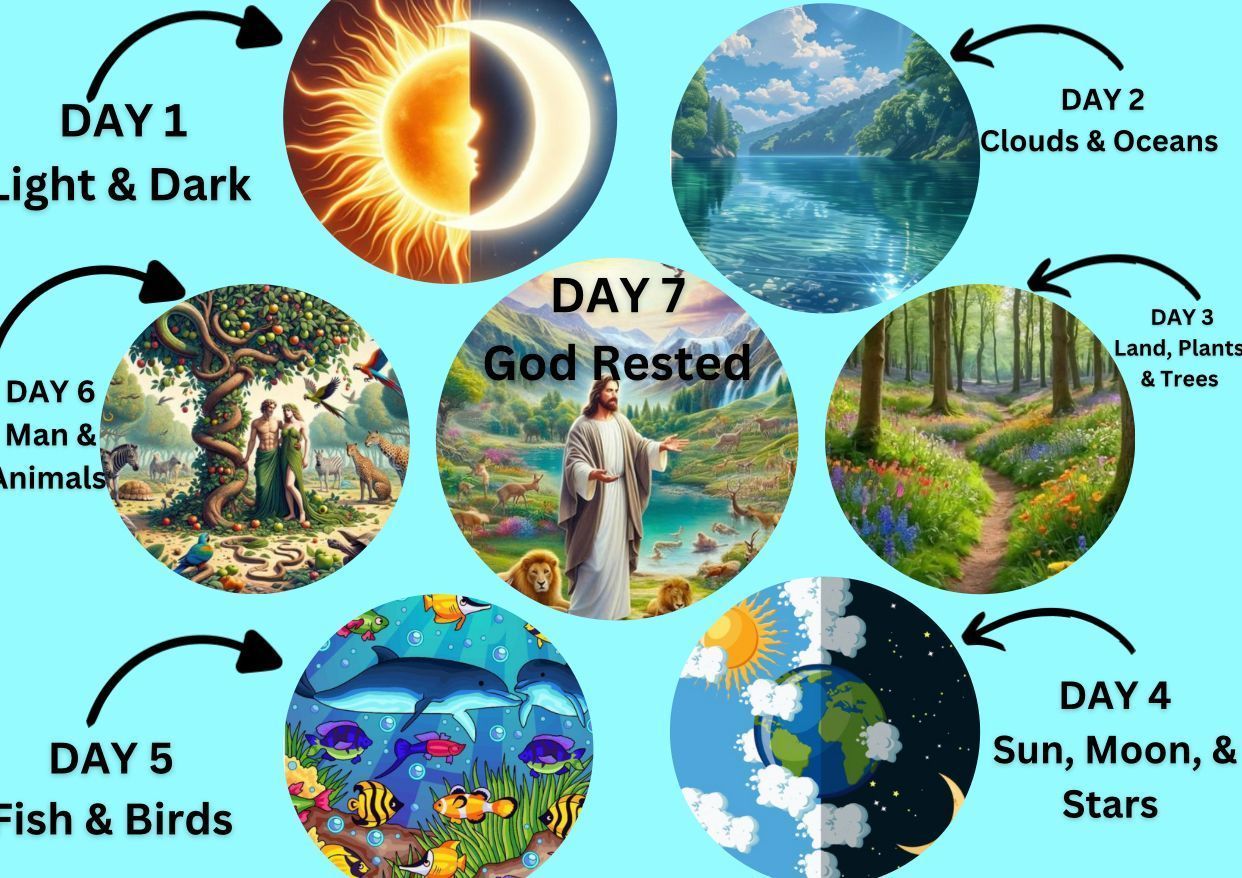Genesis: Chapter 1 to 10
Genesis is the first book of the Bible, and its name means "Beginning". It explains how the world began, how humanity was created, and how God’s relationship with people started. It sets the foundation for everything that follows in the Bible.
Chapter 1: The Creation Story
Genesis Chapter 1 describes how God created the world in six days, and then rested on the seventh day. Below is a breakdown of what happened on each day:

Day 1: Light and Darkness
In the beginning, the earth had no shape and nothing was on it. Everything was dark and deep like a vast ocean. But the Spirit of God was there, gently moving over "the water".
NOTE
"The water" here is not oceans or rivers as we know them today. In ancient Hebrew thinking, water symbolized chaos - something deep, dark, and uncontrollable. The “waters” here represent the formless, chaotic state of the earth before God brought order and structure.
And God said, “Let there be light,” and light appeared. He saw that the light was good. He separated the light from the darkness, calling the light “Day” and the darkness “Night”.
Day 2: Sky and Waters
NOTE
The Bible often uses the word 'Heaven' where we might say 'Sky' - a result of the Hebrew word שָׁמַיִם (shamayim), which can mean sky, space, or heaven. Translators choose the meaning based on context.
On the second day of creation, God said: “Let there be an expanse in the midst of the waters, and let it separate the waters from the waters.”
This means God created a space (called the sky) that divided the water above (like clouds or atmosphere) from the water below (like seas or oceans). God called this space “Heaven” or “sky”.
Day 3: Land, Seas and Plants
On the third day of creation, God said: “Let the waters under the heavens be gathered together into one place, and let the dry land appear.”
God called the dry land Earth, and the gathered waters Seas. He saw that it was good.
And God said: “Let the earth sprout vegetation, plants yielding seed, and fruit trees bearing fruit in which is their seed, each according to its kind, on the earth.”
That means God made the land (earth) produce all kinds of plants and trees, each one growing seeds or fruit. God saw that it was good.
Day 4: Sun, Moon and Stars
On the fourth day of creation, God said: “Let there be lights in the expanse of the heavens to separate the day from the night. And let them be for signs and for seasons, and for days and years, and let them be lights in the expanse of the heavens to give light upon the earth.”
God created two great lights: the sun to give light during the day, and the moon to shine at night. He also made the stars. These lights help us keep track of time - like days, months, seasons, and years.
God placed these lights in the sky to give light to the earth, and to separate light from darkness. And God saw that it was good.
NOTE
In ancient times, people believed the sky was like a solid dome that held back water above it - like a ceiling over the earth. The sun, moon, and stars were thought to be placed in that dome. Today we know the universe is much bigger, and clouds, stars, and planets are arranged differently, but Genesis describes creation in a way ancient people could understand.
Day 5: Birds and Sea Creatures
TBD
Day 6: Land Animals and Humans
TBD
Day 7: God Rested
TBD
